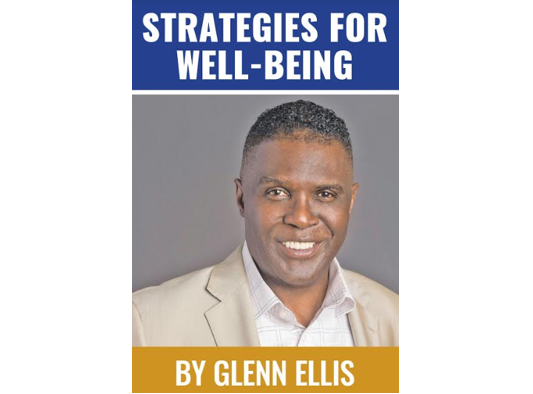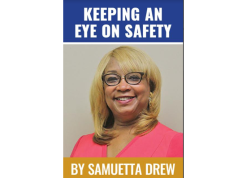By Glenn Ellis
“19 shootings, 28 victims, five dead as Philly weekend violence escalates; six shot, including four teens, at graduation party in Southwest Philly; over two days, 28 people were shot in 19 separate shootings in Philadelphia; 12 people shot, including three near a playground, in another violent weekend in Philly; shooting of six at playground BBQ caps bloody Father’s Day weekend in Philly”
These are a few of the news stories on gun violence in Philadelphia, where I live, just since the summer began!
On Wednesday, six police officers were shot in a standoff with a suspect during an incident in North Philadelphia.
Most of us believe Chicago is the most dangerous city in America, but if we look solely at the murder rate per capita, Philadelphia could be considered one of the most dangerous big cities in America.
But not so fast, there’s enough of this murder and devastation from gun violence to go around.
The combined murder total from Baltimore, Chicago, Los Angeles and Philadelphia has correctly predicted the national murder direction in every year but one between 1994 and 2017. The homicide rate for black Americans in all 50 states is, on average, eight times higher than that of whites, based on data from the Centers for Disease and Control.
Make no mistake, America has become much more dangerous. In fact, some foreign governments are issuing travel warnings to their citizens who plan a visit to the “Land of the Free and the Home of the Brave.” In general, U.S. residents are 128 times more likely to be killed by everyday gun violence than by international terrorism; black people specifically are 500 times more likely to die this way.
Japan; Canada; Ireland; and Germany are among the latest U.S. allies to issue such a warning. Sadly, in 2016, the Bahamas had this to say, “tensions in some American cities over shootings of young black males by police officers. In particular young males are asked to exercise extreme caution in affected cities in their interactions with the police.”
The government of France, which normally warns travelers about natural disasters now goes as far as to advise that French travelers “should keep their wits about them, including Boston’s Dorchester and Roxbury; New York’s Central Park (at night); downtown Houston and Atlanta; roughly a dozen neighborhoods in Chicago; and parts of Los Angeles, among others.” But, it’s also Baltimore; Cleveland; Richmond; Detroit; St. Louis; New Orleans; and many, many others.
Bottom line, this place ain’t safe!
Which brings me to the real reason I chose to write on this topic: our children.
Since we, as a nation, are currently sensitized to the trauma that children can be subjected to, with the recent incidents involving the children of immigrants, what about ours? The ones who have witnessed, been affected by, and are living in neighborhoods and communities where day in and day out, they live in environments that are inundated by shootings and homicides. This has been a particular difficult summer for them.
Our children and teens experience staggeringly high rates of gun deaths and injuries, right in their own neighborhoods. They become traumatized each time a friend or family member is killed, when someone they know is shot, and when they witness and even just hear gunshots.
Gun homicides, non-fatal shootings, and exposure to gun violence stunt lives and, because of their disproportionate impact, reflect and intensify this country’s long-standing racial inequities. Black and Hispanic children and teens are impacted by gun violence at higher rates than their white peers, in part because of deliberate policy decisions that created segregated neighborhoods and underinvestment in their communities. Firearms are the leading cause of death for black children and teens in America, while, according to Philadelphia Police Department, in 2014, in Philadelphia’s safest police district, which is approximately 85 percent white, no one was reported killed by gun violence; in the most violent district, with a roughly 90 percent black population, there were 189 shooting victims and 40 deaths.
Exposure to gun violence has an impact on children’s and teens’ psychological and mental well-being and affects their school performance, among other factors. When neighborhoods and schools are not safe from gun violence, entire generations of American children are affected. It is estimated that three million children witness a shooting each year!
Children exposed to violence, crime, and abuse are more likely to abuse drugs and alcohol; suffer from depression, anxiety, and posttraumatic stress disorder; resort to aggressive and violent behavior; and engage in criminal activity. They spend less time playing and being physically active, with one study finding that children said they would engage in an additional hour of physical activity every week if safety increased in their neighborhood.
We are now at the beginning of another school year, and many of us have gotten the school clothes/uniforms/ backpacks; and the new sneakers for our kids to be prepared for school. But are we acknowledging what they carry to school with them each day in their minds?
There are many efforts, by some well-intentioned people to end the School-to-Prison Pipeline. Let’s acknowledge that gun violence in minority neighborhoods across this country is not a black or brown problem – it’s a national one.
I believe the children are our future…don’t you?
Glenn Ellis, is Research Bioethics Fellow at Harvard Medical School and author of Which Doctor?, and Information is the Best Medicine. Listen to Glenn, on radio in Birmingham or V94.9, Sundays at 7:50pm, or visit: www.glennellis.com





